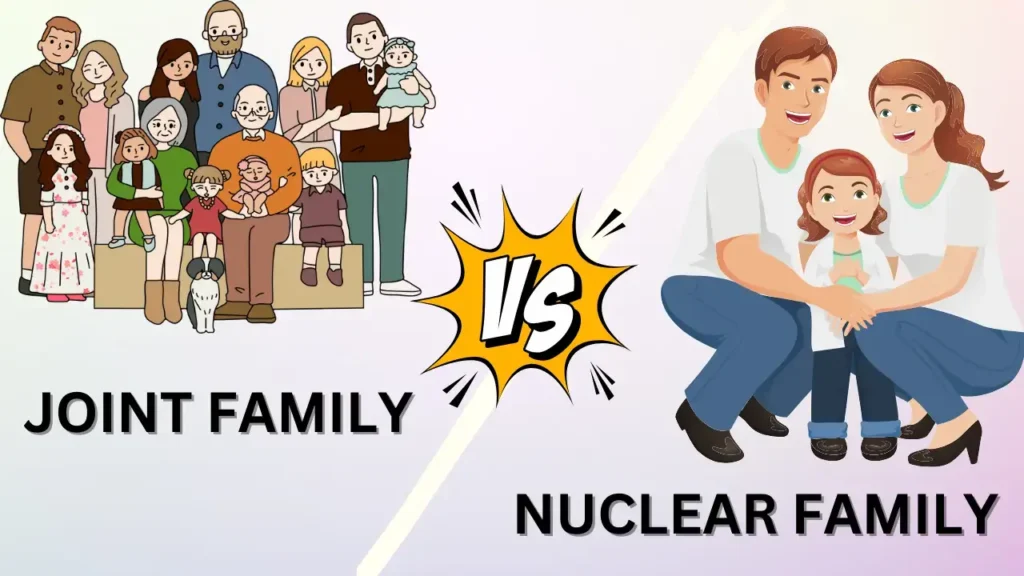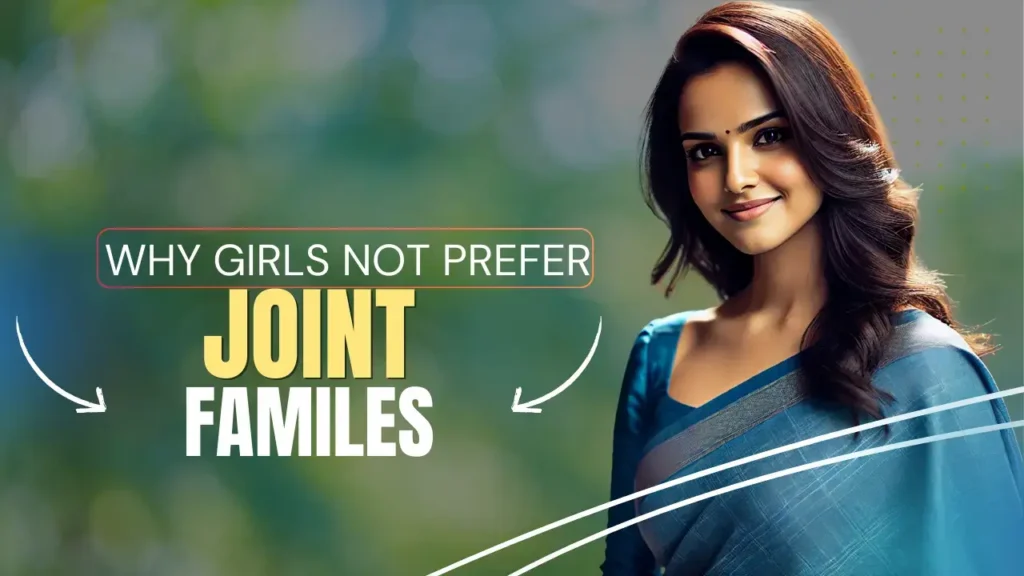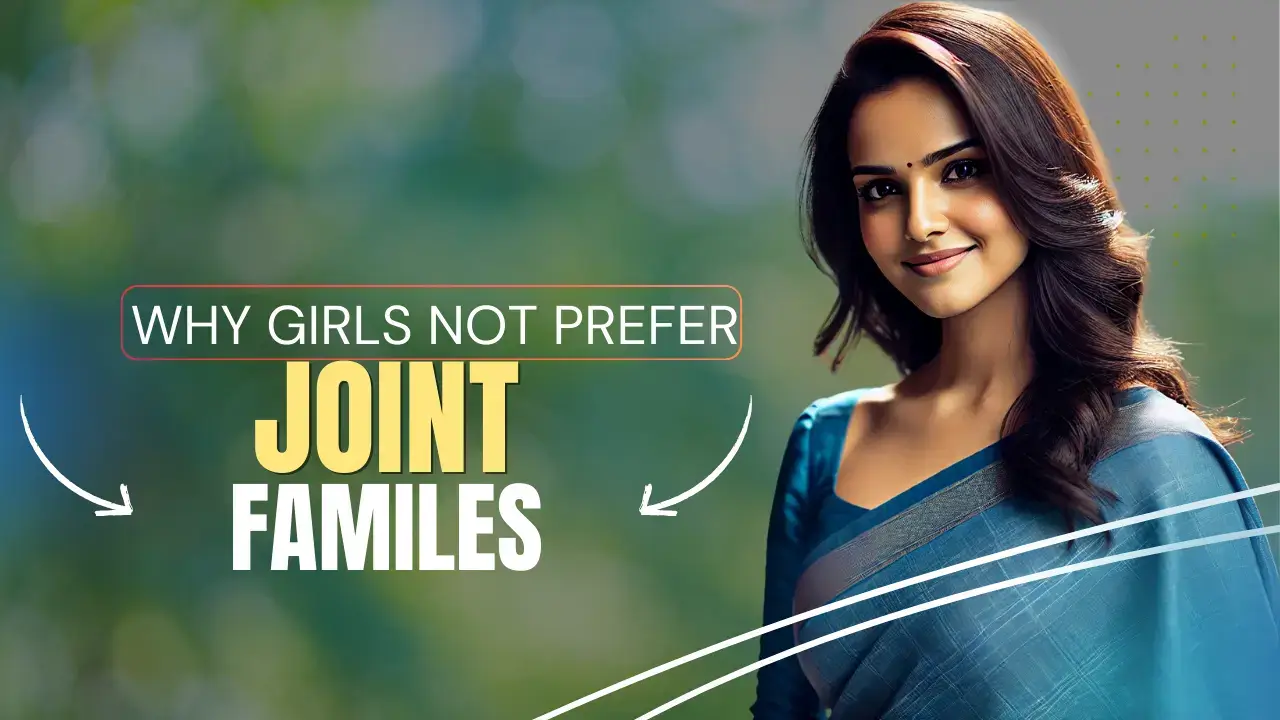In today’s evolving society, one question frequently arises: Why do new generation wives not prefer joint families? This question holds significance in India, where joint families have been an integral part of the social fabric. These traditional living arrangements were designed to provide support and unity among generations. However, as modern values and lifestyles take precedence, many young wives prefer nuclear family setups. The reasons behind this shift reveal deeper insights into cultural, emotional, and practical changes impacting contemporary family dynamics.
The Historical Context of Joint Families in India
Joint families have long been an iconic feature of Indian society, serving as a bedrock of culture, tradition, and shared living. These extended family structures, which brought together multiple generations under one roof, were designed to ensure collective support and harmony. However, as modern lifestyles emerge and societal expectations evolve, it is essential to ask: Why do new generation wives not prefer joint families? To understand this shift, we must first explore the historical roots of the joint family system in India.
Origins and Structure of Joint Families
In ancient India, joint families were not merely a social arrangement but a necessity for survival. Agrarian lifestyles required collective effort, and large family units ensured that resources, labor, and responsibilities were shared efficiently. A typical joint family included parents, their sons, daughters-in-law, and grandchildren, all living together in a common household. This structure provided several advantages:
- Economic Security: Shared income from agricultural work or businesses created a safety net for the entire family.
- Social Support: Elders played a significant role in decision-making, while younger members contributed physically and financially.
- Cultural Preservation: Customs, values, and traditions were passed down seamlessly from one generation to the next.
This arrangement thrived in a time when individual aspirations were closely tied to family well-being, and personal choices were secondary to collective goals.
The Role of Women in Traditional Joint Families
In the historical context of joint families, the role of women was both pivotal and challenging. Wives, particularly new brides, were expected to integrate seamlessly into their husband’s household, often taking on significant domestic responsibilities. Their contributions, though crucial, were rarely acknowledged outside the family. This dynamic often raises the modern question: Why do new generation wives not prefer joint families?
Key Expectations from Women:
- Caretaking Duties: Women managed household chores, childcare, and elder care without much external support.
- Obedience to Elders: Adherence to the authority of in-laws, especially the mother-in-law, was non-negotiable.
- Sacrifice of Autonomy: Personal desires, career ambitions, or leisure activities often took a backseat to family obligations.
While such sacrifices were normalized and even celebrated in the past, they contrast sharply with the expectations of today’s independent and career-oriented women.
The Resilience of Joint Families Over Time
Despite societal changes, the joint family system displayed remarkable resilience through centuries of economic and cultural evolution. Even during British colonial rule, when industrialization and urbanization began altering traditional livelihoods, joint families persisted as a dominant model of living. Their strength lay in their ability to provide:
- Emotional Stability: The extended network offered a sense of belonging and shared purpose.
- Crisis Management: Financial difficulties, illnesses, or personal challenges were mitigated collectively.
- Community Identity: Families in villages or neighborhoods were often recognized as a unit, fostering unity and social status.
This resilience is why joint families continue to hold nostalgic value in Indian culture, even as preferences shift toward nuclear living.
Why Do New Generation Wives Not Prefer Joint Families?

This key question encapsulates the transition occurring in Indian society. New-generation wives, influenced by education, career aspirations, and global exposure, often seek autonomy and individuality. While the joint family system offers traditions and community, it frequently conflicts with the priorities of modern women, who value flexibility, privacy, and equality in relationships. This divergence highlights the broader societal shift toward nuclear family setups.
Changing Priorities Among the New Generation
One of the main reasons why new generation wives do not prefer joint families is their changing priorities. Unlike earlier generations, who often prioritized family obligations over personal goals, modern wives are redefining what family life means.
Key Shifts in Priorities:
- Individuality and Privacy: Personal space has become a non-negotiable aspect of life.
- Equal Partnerships: Younger couples emphasize sharing responsibilities equally, which is harder to achieve in traditional joint family systems.
- Lifestyle Choices: Freedom to make decisions about work, travel, and leisure often clashes with joint family norms.
These changing priorities are evident in the rising preference for nuclear families, where couples can build lives tailored to their specific aspirations.
Why the Shift? Linking Past and Present
Understanding why do new generation wives not prefer joint families requires a closer examination of the transitions from the historical context to the present day. Modernization has transformed priorities, especially for women. While joint families once symbolized security and support, they now often appear as restrictive to personal growth and individuality.
Factors Driving the Shift:
- Urbanization: With families moving to cities for better opportunities, the practicality of joint living diminishes.
- Changing Gender Roles: Women are now active participants in professional spaces, challenging traditional expectations of domesticity.
- Education and Awareness: Exposure to global ideas of equality and independence makes younger wives less inclined to accept rigid familial hierarchies.
The historical context highlights how joint families adapted to serve the needs of their times. However, as society continues to evolve, it becomes evident why the new generation of wives increasingly prefers nuclear setups that align with their aspirations.
Cultural Versus Practical Challenges
Adapting to a joint family setup often requires new-generation wives to navigate cultural expectations and practical challenges. The weight of tradition sometimes imposes restrictive roles, while practical limitations make fulfilling these roles increasingly difficult.
Cultural Challenges:
- Hierarchical Structures: In joint families, elders often hold decision-making authority, leaving little room for younger wives to express opinions.
- Traditional Gender Roles: Women are still expected to shoulder household duties, regardless of their professional commitments.
Practical Challenges:
- Lack of Flexibility: Adapting to fixed family routines can be stifling for modern women.
- Limited Autonomy: Financial and lifestyle decisions are often governed by collective family priorities.
Such cultural and practical challenges underscore why new-generation wives favor nuclear setups, where their voices are equally valued.
The Influence of Career and Financial Independence
A pivotal factor in understanding why new generation wives do not prefer joint families is the influence of career aspirations and financial independence. Unlike previous generations, where women were often homemakers, today’s wives pursue ambitious professional goals.
Career and Joint Family Conflicts:
- Time Management: Balancing work responsibilities with joint family routines can be exhausting.
- Geographical Mobility: Career advancements often require relocation, making joint family living impractical.
- Financial Autonomy: Many women prefer managing their own finances without the constraints of extended family obligations.
The need for flexibility and autonomy to pursue careers makes nuclear family setups more suitable for modern women.
Compatibility Issues in Joint Family Dynamics
Compatibility is essential for harmonious living, especially in a joint family. However, generational and ideological gaps often lead to friction, further explaining why new generation wives not prefer joint families.
Key Compatibility Issues:
- Parenting Styles: Disagreements over how children should be raised often create tension.
- Interpersonal Conflicts: Differing opinions on daily matters, from meal planning to socializing, can lead to discord.
- Value Systems: Younger couples may prioritize modern values, such as equality and open communication, which clash with traditional family norms.
These incompatibilities can strain relationships, pushing modern wives to seek alternative living arrangements.
Mental and Emotional Health Factors
The impact of living in a joint family on mental and emotional well-being cannot be overlooked, especially for new-generation wives. While the traditional family setup was once a source of emotional support and stability, the same structure can sometimes create stress and strain for modern women. This leads to the critical question: Why do new generation wives not prefer joint families? As individual aspirations and societal roles evolve, understanding the mental and emotional health factors driving this shift becomes crucial.
The Emotional Strain of Balancing Expectations
One of the primary challenges for new-generation wives in joint families is balancing the weight of expectations. In traditional setups, wives are often expected to fulfill multiple roles simultaneously, including being a dutiful daughter-in-law, a supportive wife, and a caring mother. These demands can be overwhelming and lead to emotional exhaustion.
Key Stressors in Joint Families:
- Unrealistic Expectations: Many joint families impose rigid standards for behavior, dress, and even interactions, leaving little room for individuality.
- Limited Personal Space: Privacy, a cornerstone of emotional well-being, is often compromised in a shared household.
- Conflict Resolution Challenges: Disagreements with family members can become recurring stress points, especially when boundaries are unclear.
These stressors often culminate in emotional fatigue, making joint family living less appealing for modern women who prioritize mental peace.
Loss of Individual Identity
Another significant mental health concern that explains why do new generation wives not prefer joint families is the potential loss of personal identity. In joint families, the collective often takes precedence over the individual, leaving little room for self-expression or personal growth.
Contributing Factors:
- Sacrifice of Personal Goals: Women may feel compelled to give up career opportunities or hobbies to meet familial expectations.
- Lack of Decision-Making Power: Major family decisions are often made by elders, sidelining the voices of younger wives.
- Overemphasis on Traditional Roles: Women are frequently confined to domestic responsibilities, overshadowing their unique aspirations and talents.
When personal identity is constantly overshadowed, it can lead to feelings of inadequacy and low self-worth, further impacting emotional well-being.
Anxiety from Interpersonal Dynamics
The interpersonal dynamics of a joint family can often be a source of anxiety. While some relationships are supportive, others may be fraught with tension, particularly between daughters-in-law and their in-laws. These strained relationships can create an emotionally taxing environment.
Common Issues:
- Judgment and Criticism: Young wives often face scrutiny regarding their choices, from parenting to household management.
- Unresolved Conflicts: Disputes, when unresolved, can foster resentment and disrupt harmony.
- Pressure to Conform: Adapting to established family norms can lead to stress, especially when they conflict with modern values.
Such dynamics highlight why modern wives increasingly seek nuclear family arrangements, which allow them to navigate relationships with less emotional strain.
The Role of Privacy in Mental Health
Privacy plays a pivotal role in maintaining mental health, but it is often compromised in joint family living. Sharing spaces, time, and resources with extended family members leaves little room for self-reflection or relaxation.
Impacts of Privacy Loss:
- Reduced Emotional Recovery: Without private time, it becomes difficult to recharge mentally after a long day.
- Heightened Stress: Constant interactions with multiple family members can feel intrusive and overwhelming.
- Strain on Marital Bonds: A lack of private moments between spouses can create emotional distance.
The need for privacy and personal space is a significant factor driving the preference for nuclear families, where couples can prioritize their own mental health without external interference.
Modern Awareness of Mental Health
The growing awareness of mental health in contemporary society has also influenced why new generation wives do not prefer joint families. Women today recognize the importance of prioritizing their emotional well-being and are less willing to compromise on it.
Factors Shaping Mental Health Awareness:
- Access to Education: Increased education empowers women to recognize and articulate their emotional needs.
- Mental Health Advocacy: Campaigns and discussions around mental health have reduced the stigma of seeking help.
- Global Exposure: Learning from other cultures highlights the importance of individual well-being in maintaining healthy relationships.
As mental health takes center stage in life decisions, joint families often appear less conducive to fostering emotional balance.
How Mental Health Drives the Shift
The mental and emotional health factors outlined above provide a compelling answer to the question: Why do new generation wives not prefer joint families? They reflect a growing desire among modern women to lead lives that are emotionally fulfilling and free from undue stress. While joint families may still hold sentimental value, they often fail to align with the mental health priorities of today’s independent and aware generation.
Impact of Technology and Global Exposure

Technology and global exposure have transformed the way families function, influencing why new generation wives do not prefer joint families. Access to diverse lifestyles and cultural norms has opened new possibilities for young couples.
Transformative Effects of Technology:
- Digital Independence: Technology enables women to manage households more efficiently without extended family support.
- Global Outlook: Exposure to other cultures challenges traditional notions of family dynamics.
- Communication Alternatives: Virtual connections allow families to stay close without physical proximity.
These factors empower new-generation wives to adopt lifestyles that balance family bonds with personal freedom.
Have a Look: Home Business Idea: सिर्फ 15,000 रुपये में शुरू करें 5 जबरदस्त बिजनेस, हर घंटे होगी 1000 रुपये की कमाई!
Also Read: How to Handle Stress for Increased Productivity and Mental Health
Balancing Tradition and Modernity
While the preference for nuclear families is increasing, it does not mean that new-generation wives completely reject traditional values. Many strive to find a balance between respecting cultural heritage and pursuing modern aspirations.
Strategies for Balancing Both:
- Regular Family Visits: Staying connected with extended families through planned interactions.
- Celebrating Traditions: Participating in festivals and rituals to maintain cultural ties.
- Open Communication: Bridging generational gaps through honest and respectful dialogue.
This balance demonstrates that while joint families may no longer be the norm, family values can still thrive in adaptable formats.
Conclusion: Navigating the Future of Family Dynamics
The shift away from joint families answers the pressing question: Why do new generation wives not prefer joint families? This change reflects broader societal transformations, including evolving gender roles, career opportunities, and the emphasis on individual autonomy. While the joint family system remains a cherished aspect of Indian culture, its relevance is waning in the face of modern demands.
Ultimately, the future of family dynamics lies in flexibility and mutual respect. Whether in joint or nuclear setups, fostering understanding and adaptability will ensure that family bonds remain strong, even in changing times.
